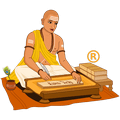























Sunrise06:53
Sunset17:18
Moonrise14:32
Moonset05:04, Jan 29
Shaka Samvat1939 Hemalambi
Vikram Samvat2074 Sadharana
Gujarati Samvat2074 Saumya
Amanta MonthMagha
Purnimanta MonthMagha
WeekdayRaviwara
PakshaShukla Paksha
TithiDwadashi upto 15:48
NakshatraMrigashira upto 12:13
YogaVaidhriti upto 01:07, Jan 29
KaranaBalava upto 15:48
KaranaKaulava upto 02:07, Jan 29
Pravishte/Gate15
Rahu Kalam16:00 to 17:18
Gulikai Kalam14:42 to 16:00
Yamaganda12:06 to 13:24
Abhijit11:45 to 12:26
Dur Muhurtam15:55 to 16:36
Amrit Kalam00:40, Jan 29 to 02:06, Jan 29
Varjyam19:41 to 21:07
Notes: All timings are represented in 24-hour notation in local time of Lancaster, United States with DST adjustment (if applicable).
Hours which are past midnight are suffixed with next day date. In Panchang day starts and ends with sunrise.


 Vrishabha 14:55
Vrishabha 14:55 Mrigashira 25:24+
Mrigashira 25:24+

 Karka
Karka Pushya 16:38
Pushya 16:38

 Simha
Simha Magha 12:46
Magha 12:46

 Simha 17:44
Simha 17:44 P Phalguni 11:51
P Phalguni 11:51

 Kanya
Kanya U Phalguni 11:41
U Phalguni 11:41

 Kanya 24:51+
Kanya 24:51+ Hasta 12:16
Hasta 12:16

 Tula
Tula Chitra 13:35
Chitra 13:35

 Tula
Tula Swati 15:32
Swati 15:32

 Tula 11:19
Tula 11:19 Vishakha 17:58
Vishakha 17:58

 Dhanu
Dhanu P Ashadha 29:53+
P Ashadha 29:53+

 Dhanu 12:38
Dhanu 12:38 U Ashadha
U Ashadha

 Kumbha
Kumbha Dhanishtha 13:59
Dhanishtha 13:59

 Kumbha
Kumbha Shatabhisha 16:02
Shatabhisha 16:02

 Meena
Meena U Bhadrapada 18:39
U Bhadrapada 18:39

 Mesha 23:42
Mesha 23:42 Bharani 18:00
Bharani 18:00

 Vrishabha
Vrishabha Krittika 16:33
Krittika 16:33

 Mithuna 25:30+
Mithuna 25:30+ Ardra 09:34
Ardra 09:34

 Simha
Simha Magha 23:30
Magha 23:30

 Simha 27:37+
Simha 27:37+ P Phalguni 21:55
P Phalguni 21:55In Hindu Calendar, the day starts with local sunrise and ends with next day local sunrise. As sunrise time is different for all cities, Hindu Calendar made for one city is not valid for any other city. Hence it is important to use location based Hindu Calendar, like this website. Further, each Hindu day consists of five elements, which are called angas. These five elements are -
In Hindu Calendar, all five elements together are called Panchang. (In Sanskrit: Panchang = Pancha (five) + Ang (part)). Hence Hindu Calendar which shows all five elements for each day is called Panchang. In South India Panchang is known as Panchangam.
When Hindu Calendar includes Muslims, Sikh, Christian, Buddhist and Jain festivals, including national holidays, it is called as Indian Calendar.